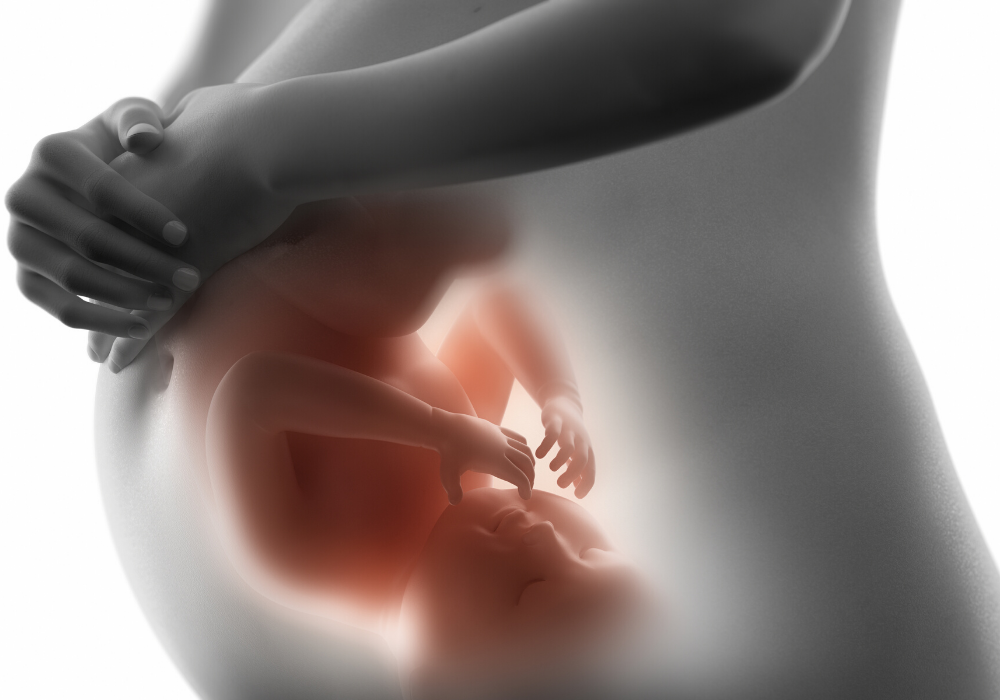
Pregnancy begins when an egg and a sperm unite into a single cell in a process called fertilization that then leads to a series of changes in the body as the baby grows inside. From the time it is implanted until the end of the eighth week of pregnancy, it is called an embryo. From the ninth week until the pregnancy ends with birth, it is called the fetus. Pregnancy usually lasts about 40 weeks which is the time from the first day of the woman’s last menstrual period until she gives birth. The fetus undergoes many changes during this 40-week timespan to prepare it for life and so we will go through how your body changes as the fetus develops.
How time is broken down during pregnancy
The 40 weeks are often grouped into 3 trimesters, each lasting about 12-13 weeks each:
- The first trimester lasts from 0 weeks to 13 weeks.
- The second trimester lasts 14 to 27 weeks.
- The third trimester lasts from 28 weeks to 40 weeks.
What is the due date and how is it calculated?
The day your baby is due is referred to as the estimated due date (EDD). Only about 1 in 20 women actually give birth on their due dates but the EDD is still extremely useful throughout the pregnancy. It determines the fetus’s gestational age so that its growth can be tracked and also provides the mother with a timeline for various tests during pregnancy.
The EDD is calculated from the first day of the last menstrual period but if that date is unknown, an ultrasound is performed to determine the estimated due date.
First-trimester changes in the mother’s body
There are quite a few different symptoms that a woman may experience during her first trimester as she adjusts to the hormonal changes that come with pregnancy. In the early stages, her pregnancy may not be showing on the outside, but inside there are many changes underway.
Rising levels of estrogen and human chorionic gonadotropin (hCG) can cause nausea and vomiting known as morning sickness that many women experience during the first few months of pregnancy.
hCG is also responsible for changes to the blood; the increased levels of hCG can be detected in a woman’s urine which is the reason she will have a positive result on a home pregnancy test.
During the first trimester, women can expect to feel tired as a result of rising levels of progesterone. She will likely also need to urinate frequently as her uterus grows and pushes on her bladder. The uterus undergoes many changes throughout the pregnancy in order to multiply in size to accommodate and nourish the growing fetus.
Many parts of the body also start to work harder during pregnancy, including the woman’s heart. Her heartbeat will increase to pump more blood to the uterus which then supplies it to the fetus. The increase in blood circulation to the woman’s face gives her a rosier complexion, which many describe as “pregnancy glow.”
First-trimester development of the fetus
Weeks 1-8
As the placenta begins to form, the brain, spinal cord, and tissues that will form the heart are some of the first organs to also form and begin to operate. The eyes, ears, nose, and genitals begin to develop and buds for limbs appear with paddle-like hands and feet.
By the end of the eighth week of pregnancy, all of the major organs and body systems have begun their development.
Weeks 9-12
During this time, the skin is thin and transparent, the backbone is soft and flexible, the fingers and toes start to form, and the bones and muscles start to grow. At this point, the hands are more developed than the feet and the arms are longer than the legs.
Second-trimester changes in the mother’s body
By the second trimester, a woman’s body becomes more adjusted to the changing hormone levels and many of the resulting effects subside or disappear. A woman may have an easier time sleeping, her energy levels may increase, and the feeling of nausea and vomiting typically go away. There are, however, many more changes the body must undergo to continue to grow and develop the fetus and so she may experience symptoms as a result.
Women often feel more pelvic pressure and a more visible baby bump appears as the uterus grows beyond the woman’s pelvis. As the fetus gets bigger and weight is gained in the front of the body, she may experience back pain.
The 20th week generally marks the halfway point of a woman’s pregnancy and she will begin to feel the fluttering movements of the fetus and the sensation that comes with the fetus kicking and turning.
Second-trimester development of the fetus
Weeks 17-20
As the second trimester progresses,the fetus also sleeps and wakes regularly and the gallbladder begins producing bile, which is needed to digest nutrients. In female fetuses, the eggs have formed in the ovaries and in male fetuses, the testes have begun to descend.
Weeks 21-24
The fetus’s brain is rapidly developing and the finger and toe prints are now identifiable. The lungs are also fully formed, however, they can not function outside of the uterus quite yet.
Weeks 25-28
The mother will definitely feel the fetus stretching and kicking at this point. The fetus will start responding to sounds by making grasping motions with the hands and changes in light by opening and closing the eyes.
As time moves on, you will continue to see the changes with ultrasounds.
Third-trimester changes in the mother’s body
In the third trimester, a woman’s breasts will start leaking colostrum, a yellow liquid, as they prepare for breastfeeding. The mother-to-be will most likely feel an increased pressure in the areas that we discussed above: her bladder from the pressure in her uterus, her back as the bump on the front continues to grow, and in her joints. Her ankles, hands, feet, and face may swell as she retains more fluids and her blood circulation slows. She will also likely notice stretch marks on her belly, thighs, breasts, and backside.
Women may experience Braxton-Hicks contractions, also known as false labor, as she nears her due date. During the last few weeks, a woman may feel exhausted because it becomes harder to find a comfortable position to sleep in.
Third-trimester development of the fetus
Weeks 29-32
Now that the fetus has undergone that majority of its development, he or she will gain weight quickly and the bones will harden although the skull remains soft and flexible. Hair on the head starts to grow and the different regions of the brain continue to form.
Weeks 33-36
The fetus starts to develop sleeping patterns and turns into a head-down position as it prepares for birth.
Weeks 37-40
The fetus drops lower into the pelvis which will visibly cause the bump to lower as well. The baby accumulates more fat, particularly around the elbows, knees, and shoulders at about half a pound per week.
Conclusion
Those are the cycles of how a fetus grows during pregnancy. For more information, contact us or read our other guides on postpartum exercise or common gynecology questions.

Written By Tidewater Physicians For Women


828 Healthy Way Unit 330
Virginia Beach, VA 23462
Fax: 757-467-0301
844 Kempsville Road #208
Norfolk, VA 23502
Fax: 757-461-0836
Appointments:
757-461-3890
Inquiries:
757-461-3890
Notice of Privacy Practices
Notice of Financial Policies

© Tidewater Physicians for Women